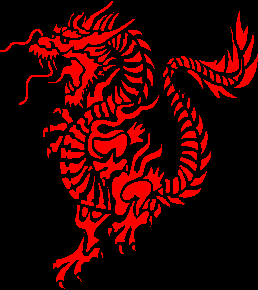Decoding Kata
These are rules we use to try and decode Kata into useful bunkai (applications).
As with all rules they can be broken, but generally apply.
Nobody knows all the original meanings and applications for the kata.
There is only one person you are applying the kata to, not multiple people coming from different directions. Always imagine your opponent in front of you while executing your kata.
Remember Karate was originally a martial art, not a sport. The idea of all Kata applications is to finish the fight and render you opponent incapacitated as quickly and efficiently as possible.
Most techniques are executed at a very close range.
No part of kata is a wasted move, all parts of the kata are important.
All limbs are in constant use in every technique, stance equally important and playing key role in every application. Stances are not only keeping you stable, but usually destabilising your opponent at the same time.
Hikitai (hand on hip) is showing you are pulling some part of your opponents body towards you, be it a shoulder elbow or arm etc. it will rarely reach the hip, but the movement in the kata shows the direction you are pulling in.
If you move at angles it showing you the best entry angle for the technique.
Angles also represent either you moving the person you are fighting or you moving around the person.
Angles of 180 degrees and over are nearly always throws or grappling techniques.
There are multiple applications to every part of the kata, none are wrong some will work for you, some won’t. All need to be tried.
The order for using techniques in the kata do not have to follow in the same order of the kata, parts can be skipped, left out, even changed half way through a technique.
Many kata give you 2 or 3 options for the same attack or next attack because the opponent may stay upright, be off balance or be lurching forward to grab, be at a closer or further distance than anticipated etc…
A slow move usually represents a lock or restraining application, although slow in the kata, it does not have to applied in a slow manner when executing.
A move where both feet leave the floor usually represents a throw.
Many movements are exaggerated and become smaller and more compact when executing in a fight, the exaggeration is helpful in gets you recreating the the exact body movement (a bit like a tennis swing the racket only hits the ball at one point, but without the entry and exit swing the shot would not work).
As I said at the beginning no one knows everything hopefully this will help you do some decoding of the kata and bring in techniques and ideas we have not thought of, even new rules for decoding! Most of all enjoy it.
Contact
I'm always looking for new and exciting opportunities. Let's connect.
123-456-7890

